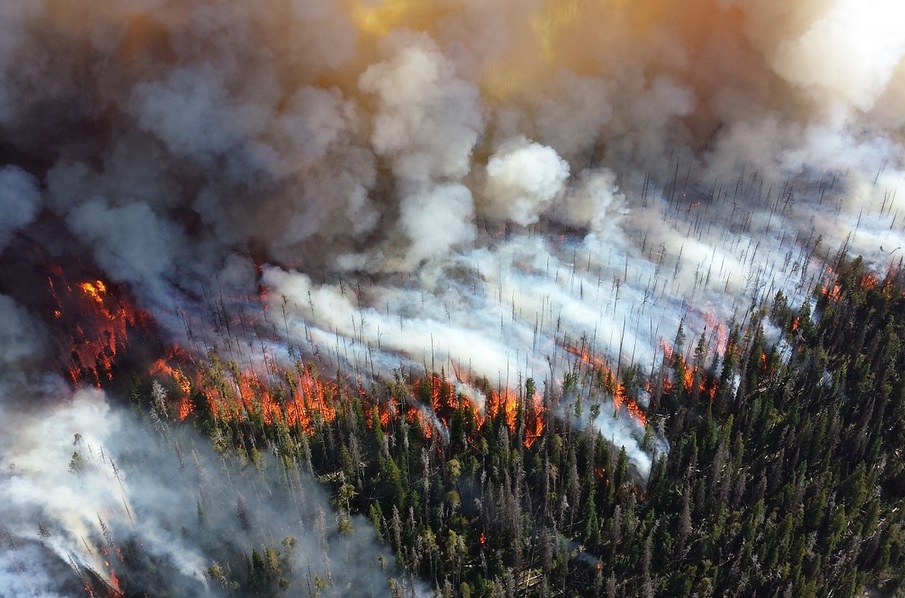
By Healthy Forests, Healthy Communities
The scale and intensity of this year’s wildfires are staggering. California’s Dixie Fire on the Plumas National Forest could soon reach 1,000,000 acres. Oregon’s Bootleg Fire on the Fremont-Winema National Forest, now fully contained, covers 413,000 acres. The Caldor Fire, which was threatening South Lake Tahoe and nearby communities and is now affecting the quality of Lake Tahoe’s blue water, is over 217,000 acres.
These are just a few examples, there are many more.
Over half of the acres that have burned this year have been on US Forest Service-protected lands. The fact California’s National Forests were entirely closed to Americans over Labor Day weekend didn’t get the attention it deserved.
It is very difficult to express the sadness of losing entire communities, large and majestic trees, public lands access, wildlife habitat, water resources and many other values and benefits our forests provide. For those of us who depend our forests to support our families, we also mourn the tremendous loss of a resource that meets society’s everyday needs and supports jobs in our rural communities.
As Greg Walcher discussed in his brilliant column, “The tragic irony is that mostly we argue about the cause of the crisis, not the solution to it.”
There are many causes and can include climate change, wildfire suppression, lack of active forest management, lack of roaded access for firefighting, and environmental obstruction and litigation. The causes are not mutually exclusive.
In many places, forests are burning, and re-burning, so severely they may not naturally regenerate. Instead, once-forested landscapes are converting to brushland with non-native and invasive species. Planting trees is politically popular, yet there are not enough seedings or nursery infrastructure available to replace the millions of trees we are losing.
As Walcher wrote, “When there are no forests left, only deserts, will we still be arguing about who to blame?” Let’s focus on proactive solutions- actions we can take today to bend the curve of unnaturally severe mega-fires.
Of all the factors contributing to large and severe wildfires, the one factor we can control is fuel.
Yet we cannot simply burn our way out of the problem, as some have suggested, due to tinderbox conditions, longer periods of warm weather, the millions of homes in the wildland-urban interface. Research studies find that mechanical thinning followed by prescribed burning is the most effective at mitigating wildfire severity.
Policymakers should support and accelerate the use of all proven, science-based forest management tools- whether logging, thinning, and controlled burns- to reduce excessive vegetation.
Fires on managed forestland are easier to put out because fuels are reduced through harvest or mechanical treatment; lands are replanted after fire; access is maintained through roads and fires are aggressively, but safely, put out. After a fire, we should remove dead and dying trees wherever appropriate, rehabilitate and reforest burned landscapes, and continue the cycle of forest management that contributes to carbon storage and sequestration.
By focusing on solutions, we can address the barriers to proactive forest management and save our forests and communities for the future.
If you agree, please take a moment to send a message to your elected officials. Tell them solutions exist and share your story.
Disclaimer: Articles featured on Oregon Report are the creation, responsibility and opinion of the authoring individual or organization which is featured at the top of every article.

